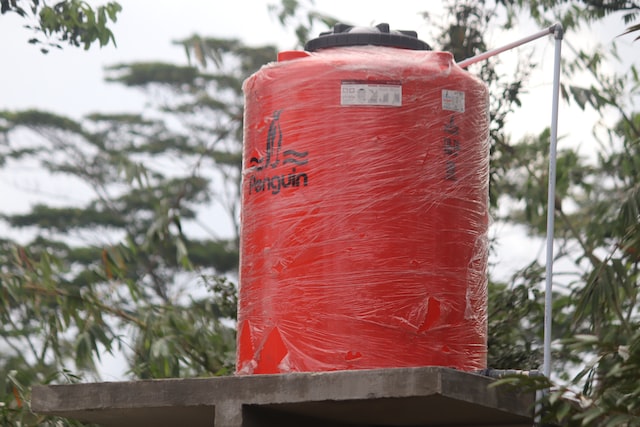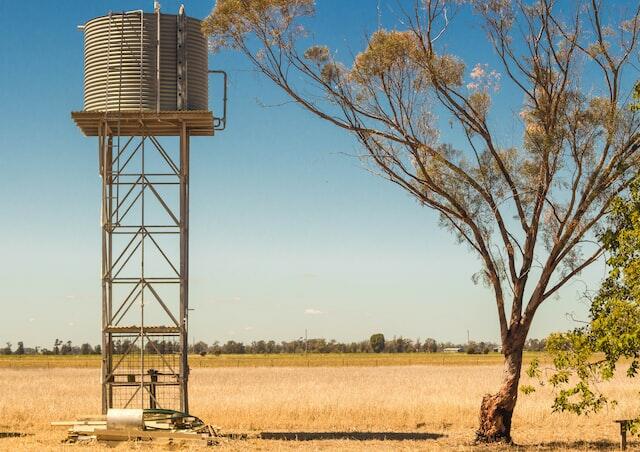It’s no secret that a good water tank is key to having a successful home.
Not only do they provide fresh, potable water for drinking and cooking, but they also help us irrigate our gardens and keep our lawns looking green and lush.
So it’s important to make sure you install your tank the right way – from the pros! We’ll give you all the tips you need to properly install your water tank.
We’ll start with some basics about tanks and installation, then move on to specific tips for different types of tanks.
Finally, we’ll wrap up with a few safety tips to make sure your installation goes smoothly. Stay tuned!
Table of Contents
Basics of Tank and Installation
There are two main types of water tanks: above-ground and below-ground. Above-ground tanks are typically made of plastic, while below-ground tanks are usually concrete.
Both have their pros and cons, so it’s important to choose the right type for your home. You’ll also need water storage containers that can hold the amount of water you need.
These can be purchased at most hardware stores. Additionally, make sure to have a solid foundation for your tank.
This is especially important for above-ground tanks, which need to be supported by a frame.
Concrete Tanks vs Plastic
Concrete tanks are more expensive than plastic ones, but they’re also much more durable – meaning they’ll last longer and won’t need to be replaced as often.
However, they’re also much heavier, so they can be more difficult to install. Plastic tanks are less expensive and lighter, making them easier to install – but they’re not as durable, so you may need to replace them more often.
When it comes to installation, both types of tanks need to be placed on a level surface. This is important to ensure that the water inside doesn’t become stagnant.
If you’re installing an above-ground tank, you’ll also need to make sure it’s properly supported by a frame.
Specific Tips for Different Types of Tanks
Now that we’ve gone over the basics of water tanks and installation, let’s get into some specific tips for different types of tanks.
Above Ground Tanks
If you’re installing an above-ground tank, there are a few things you need to keep in mind. First, as we mentioned before, it’s important to make sure the tank is properly supported by a frame.
This will help prevent the tank from tipping over or collapsing. Additionally, you’ll need to make sure the tank is properly sealed.
This is to prevent leaks, which can not only lead to water waste but also damage your home.
Finally, it’s important to have a valve that can be used to regulate the flow of water into and out of the tank. This will help you control how much water is being used at any given time.
Below Ground Tanks
Below-ground tanks are a bit more difficult to install, but there are a few tips that can make the process easier.
First, it’s important to excavate the area where the tank will be placed. This will help ensure that the tank is level and stable.
Additionally, you’ll need to make sure the tank is properly sealed and has a valve to regulate the flow of water.
Finally, you should backfill the area around the tank with gravel or sand to help support it.
Safety Tips
Now that we’ve gone over some basic tips for installing a water tank, let’s talk about safety.
First, it’s important to make sure the area around the tank is clear of debris. This includes things like rocks, branches, and leaves.
Additionally, you should always wear protective gear when working with or near a water tank. This includes gloves, goggles, and a respirator if you’re working with concrete.
Finally, if you’re not comfortable installing the tank on your own, you can always hire a professional to do it for you.
How To Choose The Right Water Tank
Now that you know some of the benefits of having a water tank, you may be wondering how to choose the right one for your home.
There are a few factors you’ll need to take into account, such as the size of your home, your climate, and your water usage.
- The size of your home – This will determine the capacity of the tank you’ll need. For example, if you have a small home with only one or two bathrooms, you won’t need as large of a tank as someone who has a larger home with multiple bathrooms.
- The climate – If you live in an area with a lot of rain, you won’t need as large of a tank as someone who lives in a dryer climate. This is because you’ll be able to collect more water from the rain. However, if you live in an area with freezing temperatures, you’ll need a tank that’s big enough to store enough water to last you through the winter months.
- Water usage – If you have a family of four who uses a lot of water for cooking, cleaning, and bathing, you’ll need a larger tank than someone who lives alone.

Finally!
Installing a water tank can be a simple or complex process, depending on the type of tank you choose and where you plan to install it.
It’s important to be aware of the safety hazards involved and to take the necessary precautions.
Additionally, you’ll need to consider your climate and water usage when choosing the right water tank for your home.

